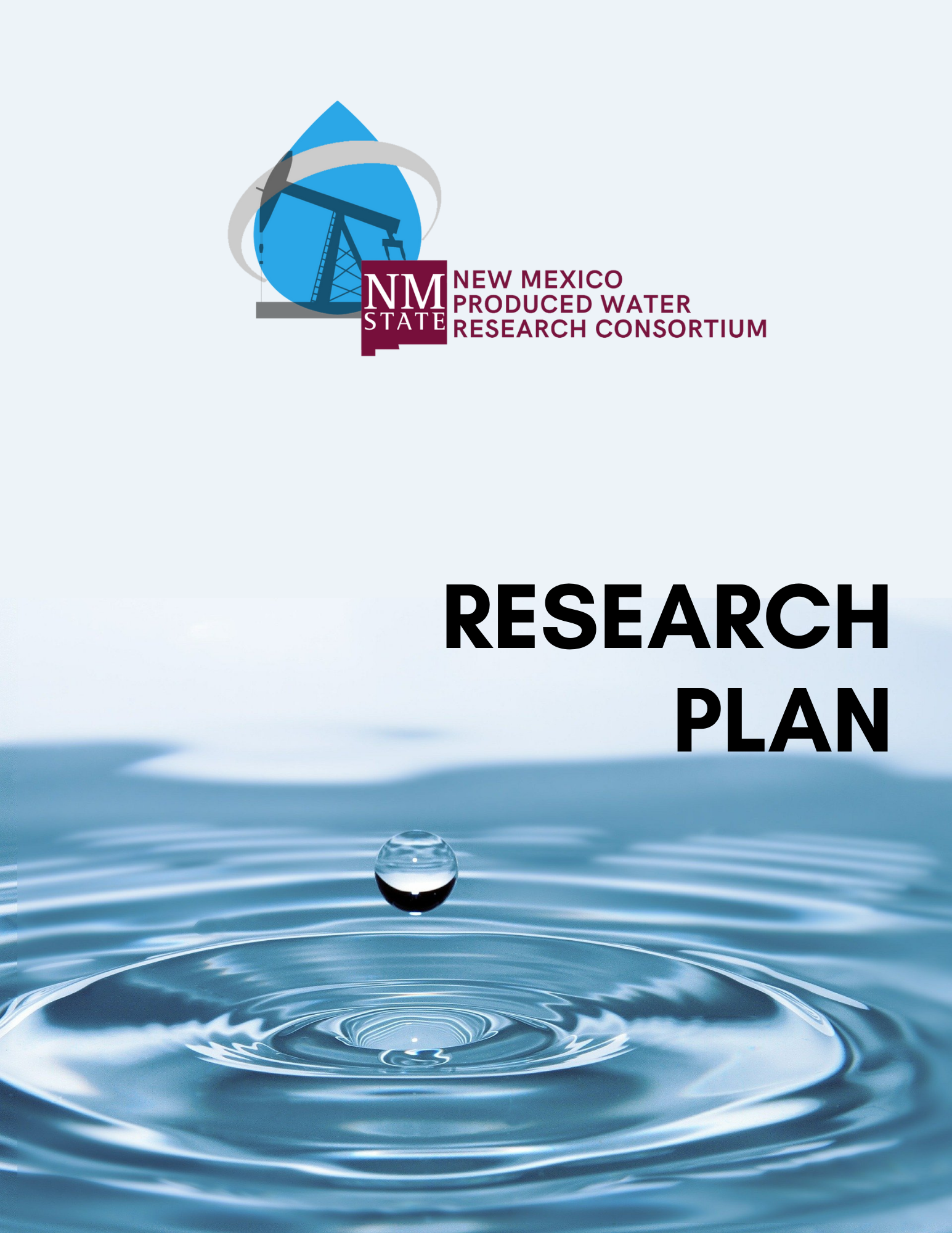Research
This science and technology gap analysis and research plan was prepared by the New Mexico Produced Water Research Consortium in response to the legislative directive of the 2019 Produced Water Act (HB 546) and a subsequent Memorandum of Understanding with the New Mexico Environment Department.
The gap analysis summarizes gaps in knowledge surrounding the technical, economic, human, and environmental health and safety issues, and concerns associated with the reuse of treated produced water for fit-for-purpose uses outside the oil and gas sector.
The research plan includes the identification of science and technology research, development, and demonstration efforts needed to fill these gaps. The tasks described herein are intended to provide a system-level understanding to reduce the risks of using treated produced water while protecting socio-economic, environmental, and ecological systems in New Mexico.
NMPWRC Treatment Testing Scheduled - October 2023 Updates
The Consortium is committed to protecting the intellectual property (IP) of the research contractors. The Consortium will sign non-disclosure agreements (NDA) and has a document management plan that will provide further protection of IP and sensitive information.
The NM-PWRC research program consists of a portfolio of independent research projects evaluated and approved by the Technical Steering Committee (TSC) with a focus on fit-for-purpose treatment technology research and technology development that can:
- Support the development of policies and regulations for the use of treated produced water in New Mexico;
- Support policies and regulations that protect the environment and human health;
- Evaluate the impact and potential risks associated with produced water reuse; and
- Serve as a model for the U.S.
The Consortium has been designed to ensure independent scientific integrity of the research conducted and the results obtained and published. Specifically, the TSC has been intentionally composed of a diverse set of stakeholders including oil and gas, midstream, other industrial members, members from non-government organizations such as environmental, natural resource, and water use and management associations, state and federal land and resource management groups, and academia. This composition helps to ensure that broad input and discussion of project, plans, and results are considered. NMED and NMSU shall share available data regarding the Project, including reports, task completion progress, reasons for delay of task implementation (if any), and results of Project implantation, with the Membership for review and comment. All TSC members will be expected to recuse themselves from review of any proposal that originates in whole or in part from the TSC member or an affiliate.
After review by the membership, the GAB will then also review with the TSC the review of results and process to ensure full transparency in a project review. After agreement by the TSC and GAB and final approval, the NMED and NMSU shall publish al the Project results and make all information available to the public.
A variety of locations are available to the Consortium for research testing. Locations include the following:
- Brackish Groundwater National Desalination Research Facility (BGNDRF); Alamogordo, NM
- Permian Basin; southeast New Mexico
- San Juan Basin; northwest New Mexico
- Texas
- NMSU Carlsbad
Bench-scale, pilot, and full-scale testing projects shall refer to the Produced Water Treatment Pilot Project Background Information Form located in Appendix B of “GUIDANCE ON PRODUCED WATER TREATMENT RESEARCH, DEVELOPMENT, AND DEMONSTRATION TESTING AND EVALUATION, REVISION 1: MAY 2022”. which may be used to Summarize Demonstration Testing For Use in NMED Treatment Permit Discussions. The completed Form shall be submitted to the Consortium Executive Director and to the New Mexico Environment Department, according to the process described on https://www.env.nm.gov/new-mexico-produced-water/guidelines-and-forms/ and will also be added to NMED’s web site to keep the public and Consortium members informed of project progress and highlights.
